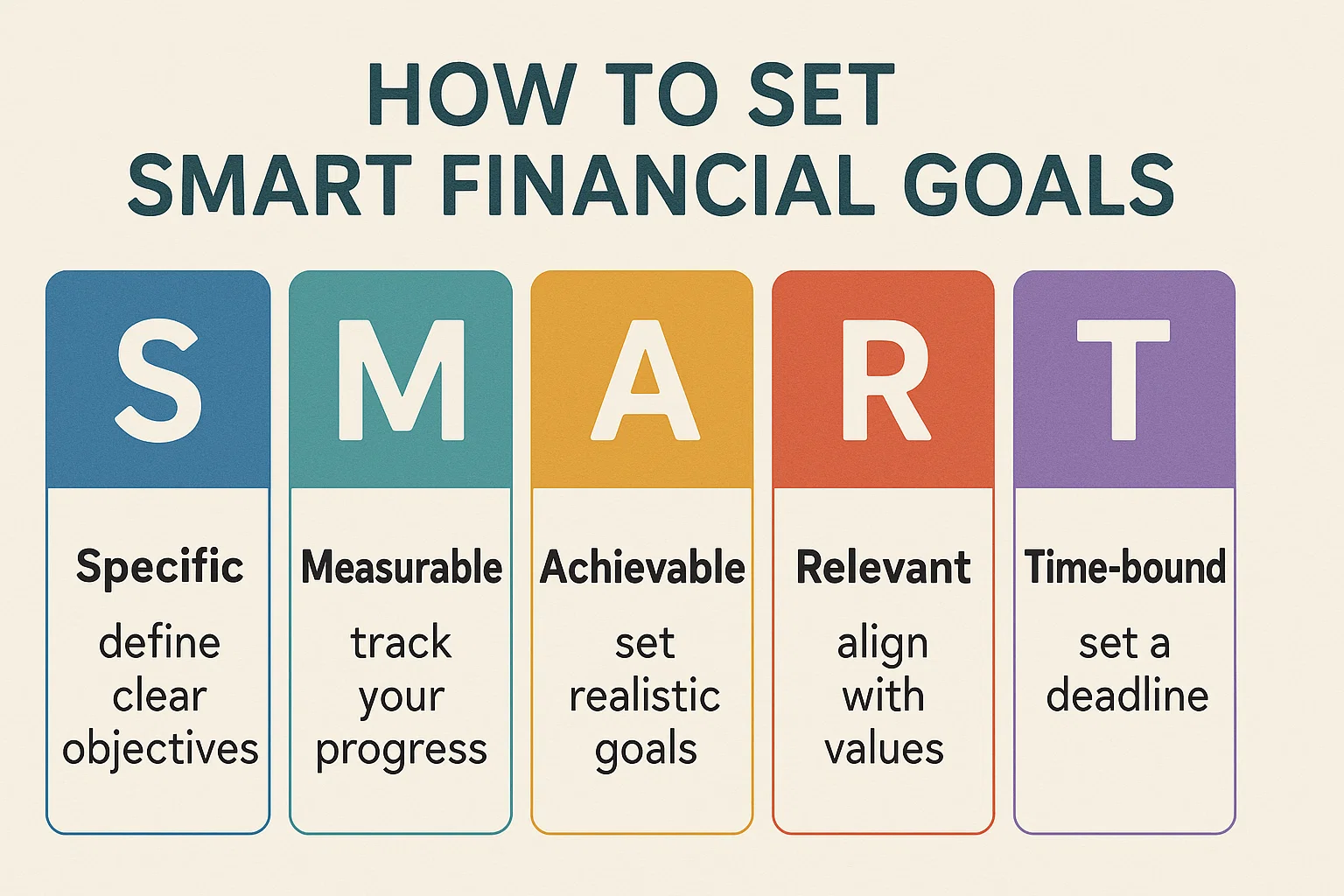Breaking News
Popular News




Enter your email address below and subscribe to our newsletter

Want to take control of your finances this year? It starts with setting SMART financial goals — the kind that are clear, trackable, and achievable.
In this guide, we’ll walk you through 5 actionable steps to help you create and stick to financial goals using the SMART method.
SMART is an acronym that helps make your goals:
Specific
Measurable
Achievable
Relevant
Time-bound
This framework turns vague money dreams into clear plans. For example, “I want to save money” becomes “I will save ₹10,000 in 3 months for emergency funds.”
Don’t say: “I want to be rich.”
Say instead: “I want to pay off ₹50,000 in credit card debt.”
👉 Clarity helps you create a plan.
Set an amount and deadline.
For example:
“Save ₹1,000 per month for 12 months = ₹12,000/year”
Tracking progress motivates you to stay on track.
Set goals within reach based on your income and expenses.
For instance, if you earn ₹25,000/month, saving ₹20,000 is unrealistic. Aim for 10–20% of your income for savings.
Your goal should align with your life priorities:
Emergency savings
Buying a home
Retirement
Education
Ask: “Will this goal improve my long-term financial health?”
A deadline creates urgency.
Examples:
Pay off loan in 6 months
Save for a laptop in 3 months
Build ₹1L emergency fund in 1 year
| Goal | SMART Version |
|---|---|
| Save more money | Save ₹5,000/month for 6 months |
| Reduce debt | Pay off ₹20,000 loan in 4 months |
| Buy a bike | Save ₹50,000 in 5 months |
A: Yes, they break your debt payoff into measurable, time-bound steps.
A: No. You can use them for saving, spending, investing, or debt reduction.
A: Use a spreadsheet, mobile app, or planner to record milestones weekly or monthly.
A: Reassess your numbers and timeline. Make it more realistic and keep going.
A: Absolutely. Prioritize them by urgency and work on 1–2 at a time.
Setting SMART financial goals can change the way you manage money forever. With focus and discipline, you’ll stop guessing and start growing.
Ready to level up your money game? Start your journey with more guides and tools at bit2050.com.